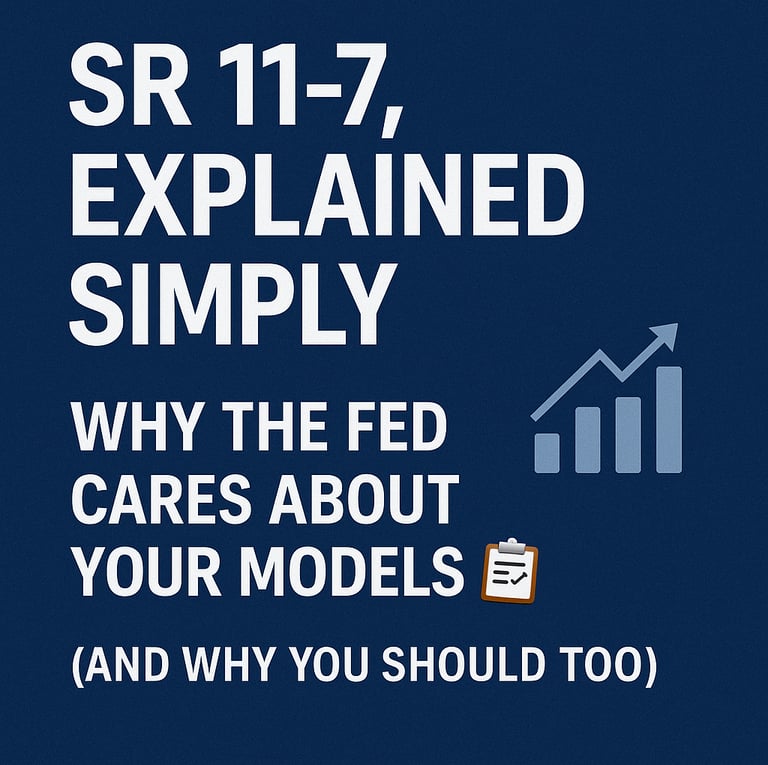A Guide to Federal Reserve SR 11-7 (Model Risk Management)
If you’re new to banking, finance, or risk management, you might have heard people talk about “SR 11-7” like it’s a secret code. In reality, it’s one of the most important regulatory guidelines for how banks should manage the risks that come with using models. Let’s break it down in simple terms.
Arun Natarajan
9/29/20251 min read


🔹 What is SR 11-7?
Issued by: The U.S. Federal Reserve & OCC in 2011.
Purpose: To make sure banks don’t blindly trust their models.
Who it applies to: Large U.S. banks (>$10B in assets), but even smaller institutions often follow it as a best practice.
In plain English: SR 11-7 is about making sure the math you rely on for business decisions doesn’t blow up in your face.
🔹 What Counts as a “Model”?
A model is any tool that turns input data into a decision or a number.
Examples:
A credit scorecard that decides whether you get a loan.
A stress testing model that estimates whether a bank can survive a recession.
An anti-fraud system that flags suspicious transactions.
🔹 The 3 Pillars of SR 11-7
Model Development & Use
Build models carefully and for the right purpose.
Document assumptions and limitations.
Use good data and keep them up to date.
Model Validation
Independent testing by people who didn’t build the model.
Ask: Does it make sense? Does it work in practice?
Use back-testing, benchmarking, and sensitivity analysis.
Governance & Oversight
Clear policies and responsibilities.
Central model inventory (including vendor tools).
Reports to senior management and the board.
🔹 Why It Matters
Bad models = bad decisions.
Think of the 2008 financial crisis—misused or poorly validated models played a big role.Regulators expect banks to prove they understand their models’ risks.
For professionals, SR 11-7 knowledge = career advantage in risk, data, and analytics roles.
🔹 How to Get Qualified (as a Professional)
If you want to build a career in Model Risk Management (MRM):
Education: Background in math, stats, finance, or engineering.
Skills: Python, R, SQL, statistical testing, and machine learning.
Knowledge: Regulatory guidelines like SR 11-7, Basel, CCAR, CECL.
Certifications (optional): FRM, PRM, CQF, or GARP’s AI in Risk.
Experience: Work in model validation, stress testing, or quantitative risk.
Bottom Line
SR 11-7 is not about killing innovation—it’s about making sure banks use models responsibly. For newcomers, it’s a gateway to a high-demand career path in finance, data science, and risk.
Want to dig deeper? Read the full SR 11-7 guidance here (PDF)
